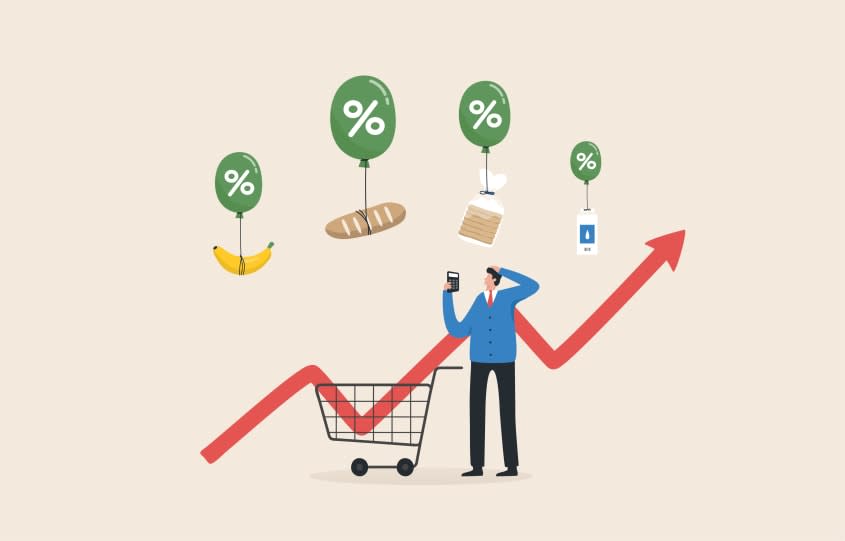Where is inflation going up the most?


While everyone across the U.S. has likely experienced at least the effects from sky-high inflation in the last year, a recent study from WalletHub found that some cities in the U.S. are facing a higher rate of inflation than others. And perhaps surprisingly, the notoriously expensive coastal cities like New York, Boston, San Francisco, and Los Angeles are not leading the charge. Rather, it's places like Miami, Detroit, and Phoenix that are feeling the squeeze.
Where is inflation going up the most?
To determine where inflation is rising the most, WalletHub compared major metropolitan statistical areas based on recent changes in the Consumer Price Index, which measures inflation. Here are the 10 cities where it found inflation is increasing the most overall:
1. Miami-Fort Lauderdale-West Palm Beach, Florida
2. Detroit-Warren-Dearborn, Michigan
3. Phoenix-Mesa-Scottsdale, Arizona
4. Tampa-St. Petersburg-Clearwater, Florida
5. Seattle-Tacoma-Bellevue, Washington
6. Dallas-Fort Worth-Arlington, Texas
7. Denver-Aurora-Lakewood, Colorado
8. Chicago-Naperville-Elgin, Illinois
9. San Diego-Carlsbad, California
10. Houston-The Woodlands-Sugar Land, Texas
Why are these cities experiencing the most rapid increases in inflation? At least for the Miami-Fort Lauderdale-West Palm Beach, Florida, area, which ranks No. 1, it could be related to the fact that, "for the first time since 1957, Florida has become the nation's fastest-growing state after decades of rapid population growth," Kiplinger hypothesized.
A RedFin report released in January flagged a number of the top 10 cities — including Miami, Phoenix, Tampa, Dallas, and Houston — as popular destinations for people who are relocating, which could also contribute to the inflation increases in those cities. Plus, homebuyers "are leaving expensive coastal job centers" like New York and Los Angeles, RedFin reported, which are conspicuously absent from the list of cities where inflation is increasing the most.
Are there any cities where inflation isn't rising as steeply?
According to WalletHub's study, these are the 10 metropolitan statistical areas with the lowest overall increases in inflation:
1. New York-Newark-Jersey City, New York and New Jersey
2. Minneapolis-St.Paul-Bloomington, Minnesota
3. Riverside-San Bernardino-Ontario, California
4. Philadelphia-Camden-Wilmington, Pennsylvania
5. Urban Honolulu, Hawaii
6. Boston-Cambridge-Newton, Massachusetts
7. San Francisco-Oakland-Hayward, California
8. Anchorage, Alaska
9. St. Louis, Missouri
10. Los Angeles-Long Beach-Anaheim, California
So just how much higher is the rate of inflation in the top-ranking Miami area compared to the New York City metropolitan area? The Consumer Price Index from the most recent month compared to a year ago increased by 9% in the Miami-Fort Lauderdale-West Palm Beach metro area, whereas in New York-Newark-Jersey City, it changed by just 3.7%. To put it another way, the Miami area got a score of 83.33 while the New York City area got a score of 5.09, with a higher score meaning a higher rate of inflation.
When will inflation start to improve?
Inflation might be on its way down soon. In April, "inflation rate edged down to a still-high 4.9%," Kiplinger reported, and it predicted that it "should drop to around 3.5% in the next few months."
Of course, 3.5% still isn't ideal, given the Federal Reserve's target for inflation is 2%. For that to happen, the wait could be a while longer. "Over 2024 to 2027, we expect inflation to average just 1.8% — below the Fed's 2% target," Morningstar predicted.
When you apply via our links we may earn an affiliate commission.
Tips for dealing with inflation
Inflation improvements might be on the horizon, but for right now, we're still living in the reality of high inflation. Here are some tips for how you can protect your wallet:
Look for a bank account with a higher yield. According to Nerdwallet, "online banks and credit unions often offer high-yield savings accounts that sweeten returns, especially as interest rates rise." Ideally, said MarketWatch, you'll earn "at least 3%" from your savings account.
Think ahead on purchases. Even when prices are high, we still need to buy things. Consider "making expected purchases on sale and ahead of time," The Wall Street Journal suggested.
Attempt to make some spending cuts. When prices are higher, a sure-fire way to save is to spend less. Start by reviewing your credit card or debit card statements, CNBC Select said, and then look for easy cuts, such as "not paying for cable, making lunch instead of going out, buying a cheaper brand of something or DIY-ing instead of paying someone to do work in your home."
Becca Stanek has worked as an editor and writer in the personal finance space since 2017. She has previously served as the managing editor for investing and savings content at LendingTree, an editor at SmartAsset and a staff writer for The Week. This article is in part based on information first published on The Week's sister site, Kiplinger.com
You may also like
4 things to consider when leaving an inheritance
'Jurassic Park' 30th anniversary: 13 things you didn't know about the film


